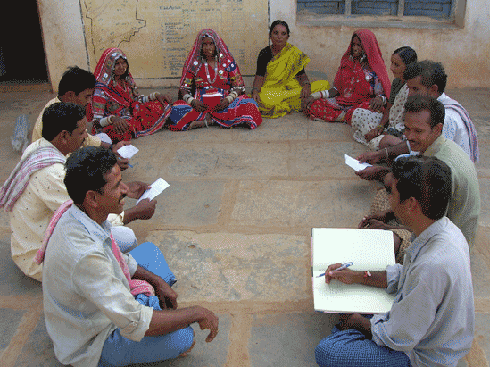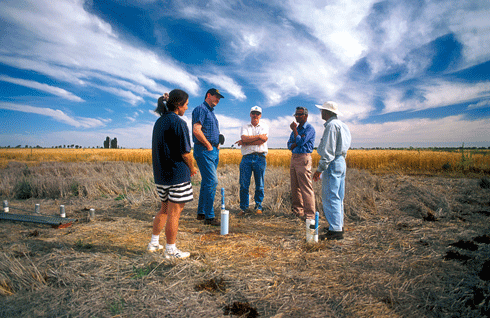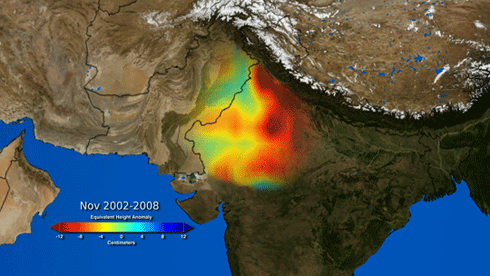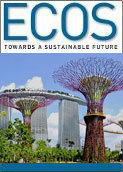
|
Published: 25 March 2013
Bringing public participation to the water table
While many would be aware that last Friday (22 March) was International Water Day, fewer would know that 2013 is the United Nations’ International Year of Water Cooperation.
Why ‘water cooperation’? By strengthening dialogue and cooperation within and between nations, the UN is supporting the achievement of established international development goals around water, including:
-
managing freshwater sustainably to ensure the world’s population has enough water to drink and remain healthy
-
ensuring enough water for food producers to satisfy the demands of growing populations;
-
ensuring enough water for other industry sectors;
-
providing a reliable water supply for all communities; and
-
preparing humanity for increased changes in weather patterns and an increase in both the number and severity of water-related disasters.
All of these issues must be addressed in ways that safeguard the health of our environment and protect ecosystems.
River and groundwater basins in particular have a habit of crossing community, national and political boundaries. The key to the success of water management initiatives around such ‘transboundary’ water is understanding and acceptance from all stakeholders – including the public – of the issues and actions required to achieve the above goals.
Rather than causing open conflict, the need for water-sharing can generate unexpected cooperation. In fact, citizen or public participation has proven its merits in some of the most contentious and complex projects in Western democracies, including water management projects.
In southern India’s drought-prone Andhra Pradesh region, for example, community-based groundwater management, involving partnership with public agencies and covering 638 villages, has been successful for almost twenty years. Closer to home, Queensland’s Lockyer Water Users Forum is an inspiring example of how irrigators in the Lockyer Valley co-manage groundwater resources within a regulatory framework.
Unfortunately, the benefits of public participation are commonly unacknowledged, disregarded or misunderstood by decision-makers.
In an often-cited 1969 paper, Sherry Arnstein wrote that public participation is about having the real power needed to affect the outcome of a process.1 True participation happens in partnerships where all the stakeholders agree to share responsibilities about planning and decision-making by means of clear structures and processes.

|
|
Community involvement is a key aspect of the Andhra Pradesh Farmer Managed Groundwater Systems (APFAMGS) Project. Credit: APFAMGS
|
Successful examples of public participation also exist in community partnerships around nuclear repository programs in Europe, Canada and Asia.2 The search for suitable sites for radioactive waste disposal has a history of conflicts, delays, and sometimes failure. In response, waste management institutions have progressively turned away from the traditional one-way flow of information and are now embracing the ‘engage-interact-cooperate’ approach with opportunity for feedback and negotiation. This shift has fostered the emergence of sound partnerships between the proponents of disposal facilities and potential host communities.
Public participation has proven equally effective in resolving major water-related issues. Water management is often about making sure a neighbour – whether the farmer next door or an entire nation – is not deprived of surface or groundwater flows.
At the scale of local farming communities, examples of self-regulation of groundwater management exist in India where government agencies have set up partnerships with local private organisations to develop farmer cooperatives. At an international scale, participation in water management is important for bridging incongruities between geographical boundaries of river and groundwater basins and national and state boundaries.
Participation also means giving due consideration to social and demographic arguments. For example, while reviving and expanding agricultural land in regions unfit for cropping by providing cheap, subsidised water for irrigation may seem cost-ineffective, it helps lessen excessive migration to cities.
In this changing landscape of participation and negotiation, socially sensitive scientists and engineers are still the much-needed technology providers, but they are no longer the only ones.
Transboundary water institutions have emerged for many of the world’s large river basins, such as the Ganges, Indus, Mekong, Senegal, Rhine, Danube and Tigris-Euphrates. The degree to which public participation is embedded in such institutions differs considerably, ranging from individual national autonomous bodies to comprehensive regional water basin authorities.
The challenge of transboundary water management is formidable, especially as there are 263 international river and lake basins worldwide – 13 basins are shared between 5–8 nations, while as many as 5 basins (Congo, Niger, Nile, Rhine and Zambezi) are shared between 9–11 nations. The champion in providing hydrologic connectivity between nations is the river Danube, which travels within the territory of 18 European nations. No less than 145 nations have territory within international basins.

|
|
A schoolgirl watering a seedling, Zimbabwe: examples of self-regulation of groundwater management exist in local communities where farmer cooperatives have been setup. Credit: CSIRO
|
In the European Union (EU) the Water Framework Directive is the prime legislative lever to ensure public participation in developing and updating river basin management plans. By pursuing water management around river basins rather than state boundaries, the EU is striving to encourage a more holistic and territorially integrated approach to solving water-related issues.
The WFD and other EU directives have highlighted the importance of public participation, as part of addressing the UN’s Agenda 21 to implement sustainable development for the 21st century. However, the implementation of the WFD in different EU member states has not been uniformly successful owing to cultural and historical differences in policy style, particularly with regard to participatory governance.3
Australia too has valuable experience in developing and managing controversial groundwater projects with potentially large social, economic and environmental impacts. In particular, the social dimension to sustainable groundwater yield and managed aquifer recharge projects has received considerable attention.4
For many large river and groundwater basins, it remains a challenge to address transboundary water issues, such as upriver nations cutting off downriver states’ water supplies, or overexploitation of groundwater resources by one nation to the detriment of its neighbours. Public participation in the development of local or regional scale water management plans that enforce ‘equitable and reasonable use’ will generally result in better projects and ensure broad and enduring support throughout, and even beyond, a project’s lifetime.

|
|
Groundwater study site, Griffith, NSW: Public participation has proven an effective process to resolve water-related issues in a number of countries, including Australia. Credit: CSIRO
|
Clearly, the level of participation will depend on local circumstances – when participation shifts towards local, collective self-management, the need for skilled support increases. More generally, partnerships between local stakeholders and public agencies will only be effective with a firm, long-term commitment from both sides.
Dr Dirk Mallants leads the Groundwater Hydrology program of CSIRO Land and Water. For more than a decade he has been involved in stakeholder engagement and community collaboration aimed at promoting greater understanding, and potentially, acceptance of government policy and decisions regarding radioactive waste disposal in Belgium and elsewhere.
1 Arnstein SR (1969) ‘A Ladder of Citizen Participation,’ J.Am. Inst. Planners, Vol. 35, No. 4, July 1969, pp.216-24.
2 NEA-OECD (2003) Public information, consultation and involvement in radioactive waste management. An international overview of approaches and experiences. OECD Paris, ISBN 92-64-02128-0, pp.139.
3 Enserink B, Patel M, Kranz N, and Maestu J (2007) Cultural factors as co-determinants of participation in river basin management. Ecology and Society 12(2): p.24.
4 Mitchell M, Curtis A, Sharp E, Mendham E (2012) Directions for social research to underpin improved groundwater management. Journal of Hydrology, 448–9: pp.223-231.




